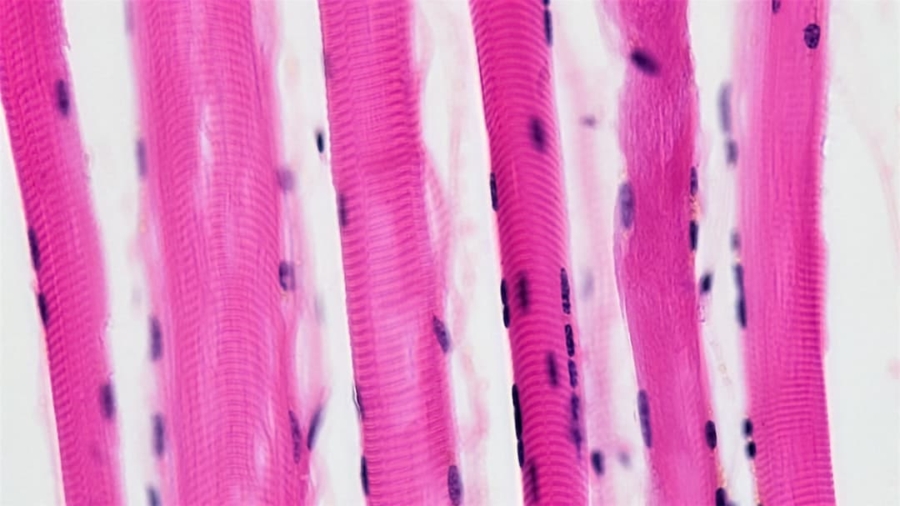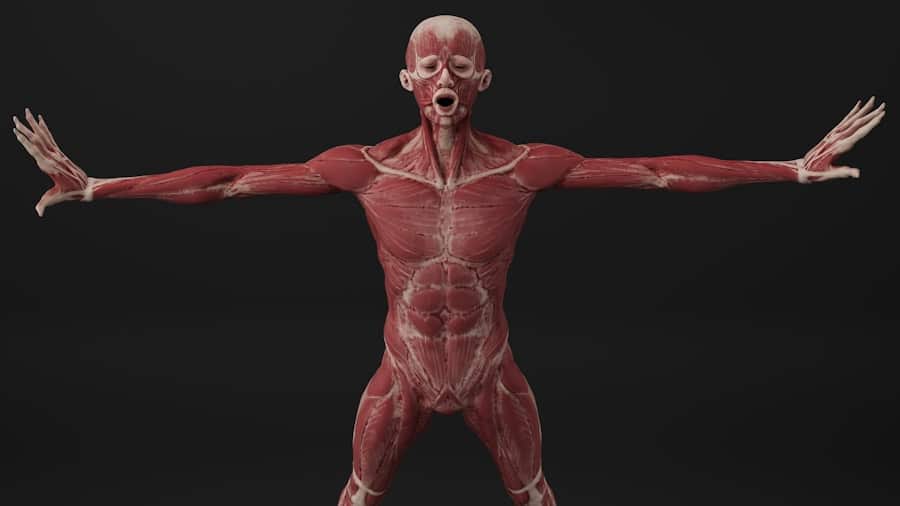Bioprinting represents a groundbreaking intersection of biology and engineering, where the principles of 3D printing are applied to create living tissues and organs. This innovative technology utilizes bioinks—composed of living cells, biomaterials, and growth factors—to fabricate complex biological structures layer by layer. The potential applications of bioprinting are vast, ranging from drug testing and disease modeling to regenerative medicine and tissue engineering.
In particular, the ability to produce human tissues on demand has garnered significant attention, especially in the context of treating severe injuries such as burns. The process of bioprinting involves several key steps, including the design of the tissue structure, the selection of appropriate bioinks, and the actual printing process itself. Advanced bioprinters can precisely position cells and biomaterials to replicate the architecture of natural tissues.
This precision is crucial for creating functional skin grafts that can integrate seamlessly with the patient’s body. As researchers continue to refine bioprinting techniques, the hope is to develop solutions that not only restore skin integrity but also enhance healing and reduce complications associated with traditional grafting methods.
Key Takeaways
- Bioprinting is a revolutionary technology that uses 3D printing to create living tissues and organs.
- Creating artificial skin for burn victims presents challenges such as mimicking the complex structure and function of natural skin.
- Bioprinting plays a crucial role in skin tissue engineering by providing a platform for creating customized skin grafts.
- Advancements in bioprinting technology, such as the use of bio-inks and biocompatible materials, are driving progress in skin regeneration.
- Bioprinting allows for the customization of skin grafts, offering a promising solution for addressing the unique needs of burn victims.
Challenges in Creating Artificial Skin for Burn Victims
Creating artificial skin for burn victims presents a multitude of challenges that stem from the complexity of skin structure and function. The skin is not merely a protective barrier; it is a dynamic organ composed of multiple layers, each with distinct cell types and functions. The epidermis, dermis, and subcutaneous tissue work together to provide protection, sensation, thermoregulation, and immune defense.
Researchers must consider not only the physical properties of the skin but also its biochemical environment, which plays a critical role in healing. One of the primary challenges in bioprinting artificial skin is ensuring that the printed tissue can adequately mimic the mechanical properties of natural skin.
Burn injuries often result in significant loss of skin elasticity and strength, which can lead to complications such as scarring and contractures. To address this, bioinks must be carefully formulated to achieve the right balance of stiffness and flexibility. Additionally, the vascularization of printed skin is a significant hurdle; without an adequate blood supply, even the most sophisticated artificial skin will struggle to survive and integrate with the host tissue.
Researchers are exploring various strategies to enhance vascularization, including incorporating endothelial cells into bioinks or using growth factors that promote blood vessel formation.
The Importance of Bioprinting in Skin Tissue Engineering
Bioprinting holds immense promise for advancing skin tissue engineering, particularly for patients suffering from severe burns. Traditional methods of skin grafting often involve harvesting skin from healthy areas of the body, which can lead to additional trauma and complications. In contrast, bioprinting offers a more sustainable approach by enabling the production of skin grafts that are tailored to the specific needs of each patient.
This personalized medicine approach not only improves outcomes but also minimizes donor site morbidity. Moreover, bioprinted skin can be designed to incorporate various cell types and biomaterials that enhance healing and functionality. For instance, researchers can embed fibroblasts and keratinocytes within the bioink to create a more authentic skin-like structure.
Additionally, by integrating growth factors and extracellular matrix components into the printed grafts, it is possible to promote cell proliferation and migration, thereby accelerating the healing process. This level of customization is particularly beneficial for burn victims, who often require grafts that can adapt to their unique physiological conditions.
Advancements in Bioprinting Technology for Skin Regeneration
Recent advancements in bioprinting technology have significantly improved the feasibility and effectiveness of creating artificial skin for burn victims. One notable development is the use of multi-material bioprinting techniques that allow for the simultaneous deposition of different cell types and biomaterials. This capability enables researchers to create more complex tissue structures that closely resemble natural skin.
For example, some bioprinters can layer dermal and epidermal components separately, allowing for better control over the architecture and functionality of the printed skin. Another promising advancement is the incorporation of smart biomaterials that respond to environmental stimuli. These materials can change their properties in response to factors such as temperature or pH, which can be particularly useful in promoting healing in dynamic environments like wounds.
Additionally, researchers are exploring the use of 3D bioprinting combined with other technologies such as electrospinning or microfluidics to enhance tissue complexity and functionality further. These innovations are paving the way for more effective treatments for burn victims, potentially reducing recovery times and improving overall patient outcomes.
The Role of Bioprinting in Customizing Skin Grafts for Burn Victims
The customization capabilities offered by bioprinting are particularly advantageous for burn victims who often present with unique wound characteristics and healing requirements. Each burn injury is different in terms of depth, size, and location, necessitating tailored treatment approaches. Bioprinting allows clinicians to design skin grafts that match the specific dimensions and properties needed for optimal integration with the patient’s existing tissue.
Furthermore, bioprinted grafts can be engineered to include specific cell types that are crucial for healing. For instance, incorporating melanocytes can help restore pigmentation in areas affected by burns, while adding immune cells can enhance local defense mechanisms against infection. This level of customization not only improves aesthetic outcomes but also addresses functional deficits that may arise from burn injuries.
By leveraging bioprinting technology, healthcare providers can offer more effective solutions that cater to the individual needs of each patient.
Ethical Considerations in Bioprinting Artificial Skin
Cell Sourcing and Autologous Cells
One significant concern revolves around the sourcing of cells used in bioinks. While autologous cells—those derived from the patient—are ideal for minimizing rejection risks, obtaining these cells can be invasive and may not always be feasible for severely burned patients.
Stem Cells and Consent
The use of stem cells or cells derived from other sources introduces additional ethical dilemmas related to consent and potential exploitation.
Access, Equity, and Fairness
Another ethical consideration pertains to access and equity in healthcare. As bioprinting technology advances and becomes commercially available, there is a risk that only certain populations will benefit from these innovations due to cost or availability issues. Ensuring equitable access to bioprinted skin grafts will be crucial in preventing disparities in treatment outcomes among different demographic groups. Policymakers and healthcare providers must work together to establish guidelines that promote fair access while also addressing safety concerns associated with new technologies.
Future Implications of Bioprinting in Burn Victim Treatment
The future implications of bioprinting in treating burn victims are profound and far-reaching. As technology continues to evolve, we may witness a paradigm shift in how burn injuries are managed.
Moreover, advancements in bioprinting could lead to the development of fully functional skin substitutes capable of performing all physiological functions of natural skin. This could include not only protection against pathogens but also sensory functions such as touch and temperature perception. Such innovations would significantly enhance the quality of life for burn survivors by restoring not just physical appearance but also sensory experiences that are often compromised after severe injuries.
The Potential of Bioprinting in Revolutionizing Burn Care
Bioprinting stands at the forefront of medical innovation with its potential to transform burn care dramatically. By enabling the creation of customized skin grafts that closely mimic natural tissue architecture and function, this technology offers hope for improved healing outcomes for burn victims. As researchers continue to overcome existing challenges and ethical considerations surrounding bioprinting, we can anticipate a future where personalized medicine becomes a reality for those affected by severe burns.
The ongoing advancements in bioprinting technology promise not only enhanced treatment options but also a deeper understanding of skin biology and regeneration processes. As we move forward into this new era of regenerative medicine, it is essential to remain vigilant about ethical implications while striving for equitable access to these life-changing therapies. The potential benefits of bioprinting extend beyond individual patients; they could reshape our entire approach to wound care and tissue engineering in ways we are only beginning to comprehend.
In addition to the groundbreaking advancements in bioprinting for creating artificial skin for burn victims, researchers are also utilizing the best free software for 3D modeling in 2023 to enhance their designs and improve the accuracy of the printed skin. This software allows for precise customization and optimization of the skin grafts, ensuring a better fit and function for patients. By incorporating cutting-edge technology and tools like this, the field of bioprinting continues to revolutionize the treatment of burn injuries. To learn more about the top software options for 3D modeling, check out this article.
FAQs
What is bioprinting?
Bioprinting is a 3D printing technology that uses living cells, biomaterials, and biochemicals to create tissue-like structures that imitate natural tissues and organs.
How is bioprinting used in creating artificial skin for burn victims?
Bioprinting is used to create artificial skin by layering bio-inks containing living cells onto a biocompatible scaffold. This process mimics the natural structure of human skin and can be customized to match the specific needs of burn victims.
What are the benefits of using bioprinting to create artificial skin for burn victims?
Bioprinting allows for the creation of personalized and customized skin grafts that closely resemble natural skin. It also reduces the risk of rejection and infection, and can potentially accelerate the healing process for burn victims.
Are there any limitations or challenges in using bioprinting for creating artificial skin?
Challenges in bioprinting artificial skin include the need for further research and development to improve the functionality and durability of the printed skin, as well as the scalability and cost-effectiveness of the technology.
Is bioprinting already being used to create artificial skin for burn victims?
While bioprinting technology is still in the research and development phase, there have been successful experiments and clinical trials using bioprinted skin for burn victims. However, widespread use of bioprinted skin in clinical settings is still in the early stages.



